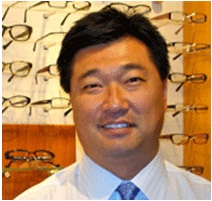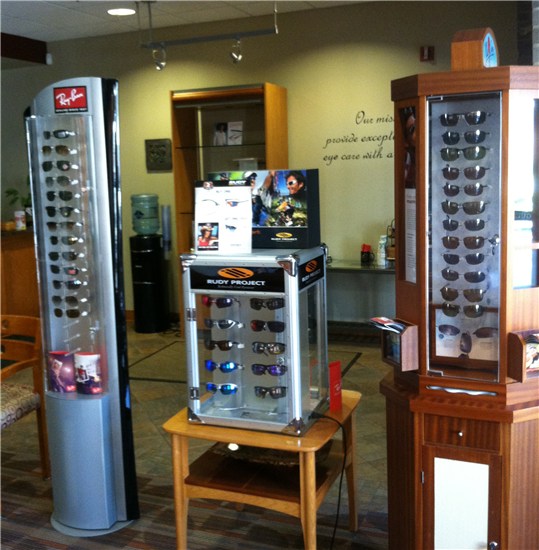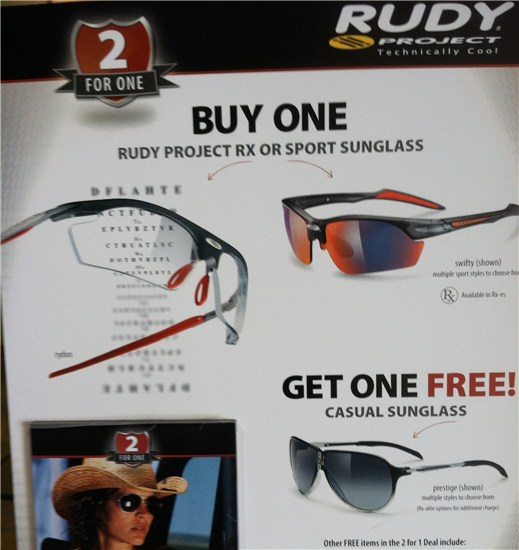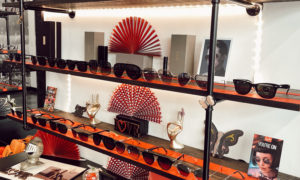By Yoongie Min, OD

Consumers know the dangers of sun exposure and the importance of good sunwear. But how about prescription sunwear? A doctor’s recommendation can spur sales.
Many patients are just getting used to the idea of wearing sunglasses regularly, so you and your staff may be hesitant to start encouraging these same patients to invest in a pair of prescription sunglasses. However, putting patients in high-quality prescription sun lenses is a great way to protect patients’ eyes and improve their enjoyment of the outdoors. It is a way to leverage lifestyle dispensing as you better understand how your patients work and play, and the vision needs that accompany those activities. Prescribing prescription sunwear also is a winner for the OD and their practice as prescription sunglasses are much more profitable to sell than plano sunwear. Here is how my practice makes the most of this opportunity.
Having the Conversation:
Prescription Sunwear
We try to make it sound like prescription sunwear is not an “option” if someone wears a prescription, but more of a necessity. In the exam room, I routinely ask the patient:
“What type of prescription sunglasses do you have and how old are they?”
If they say they have none, that is my window to explain the health and vision benefits of prescription sunwear. If they say they do have sunwear, but it is more than a year or two old, that is my opportunity to prescribe a new pair.
Prescription Sunwear = Profitability
Right now, our practice has about 8-10 percent of our optical revenue based on sunglasses and prescription sunglasses. Our goal is to raise that percentage to 15-20 percent since that would indicate a lot of second-pair sales. Meeting that goal will require more patient education and continued questioning of patients by myself and my staff to determine how best to meet their lifestyle needs.
Prescription sunwear is generally significantly more expensive than plano sunwear. The plano sunwear generally retails in our office for between $60 to $200. With prescription sunwear, we are often using these frames and then selling sun lenses which are usually polarized for anywhere between $200 to $600 depending on whether they are single vision or multifocal.
Master Rx Sunwear Optician Hand-Off
When we hand off to the optician, we have many times already determined whether the patient prefers separate prescription sunglasses, sunclips or Transitions lenses. We will stress the patient’s preference to the optician. If the patient is not sure, I will say something like: “Mr. Jones is not sure which type of sunwear he prefers, so could you please show him his various options?” The opticians then use that opportunity to show demonstration lenses utilizing polarized technology, Transitions samples and clip samples. The patient is able to go outside and see for themselves the difference polarized and Transitions lenses make. Utilizing in-office samples and demos is a powerful way for patients to experience the various options available to them.
Don’t Prejudge Patients’ Ability to Purchase Prescription Sunglasses
I try not to make any assumptions on who will buy prescription sunwear. Of course, anyone who wears eyeglasses full time is an excellent candidate and I am always surprised at how many people still do not have prescription sunwear who have been wearing clear glasses for years. We recommend polarized sunwear in almost all situations because of its superior ability to reduce glare.
Consider Developing Niche in Prescription Sports Sunwear
Prescription sports sunwear is a slowly growing niche. I think many people are still unaware that we can do specialized lenses for golf, biking, running and other outdoor activities. The key is to have a vendor that provides this type of eyewear so you can demonstrate it in the office. We work with a company called Rudy Project that offers almost any type of sports eyewear imaginable. We are also listed as a retailer on their web site, which helps bring consumers seeking sports sunwear into our office.
Use Second-Pair Discounts to Encourage Patients to Purchase
Prescription sunwear is often more expensive, especially for higher prescriptions, due to the fact that it is sunwear, and the opticals are probably putting the patient into thinner high index type lenses that are more expensive in general. When you combine the cost of high index lenses, polarization, and anti-reflective treatments, the cost can become quite high. We try to use second-pair discounts to encourage, and make it easier, for patients to purchase prescription sunglasses.
We charge about $95 more for polarized sun lenses than standard tinted sun lenses, but most people do not seem to hesitate in getting them when we demonstrate the capability of glare reduction. Polarized lenses can make it more difficult to see certain digital screens and gauges, though, and some of our patients who are pilots choose not to get them for that reason. 
Strategically Place Sunglasses in Office–And Let Patients Know Nearly Any Can Accommodate Rx
We have some point of purchase materials in our optical, but the main way we market sunglasses is by placing them directly adjacent to where patients relax in our reception area. That encourages them to try them on and look at them. My staff is always telling patients that almost any sunglasses they try on can be made into prescription ones. We hold an annual trunk show that is devoted to sunwear, and always encourage patients to purchase not just sunglasses, but prescription sunglasses, at these events.
Related ROB Articles
Heat Up Sales: Prescribe Sunwear for All Patients
Develop a Specialty: Tinted Sportswear Lenses for Individual Sports
Polarized Rx Sunwear = Prime Revenue Opportunity
Yoongie Min, OD, is the owner of Northwest Vision Center, with locations in Columbus and Chillicothe, Ohio. To contact him: yminod@rrohio.com.



























